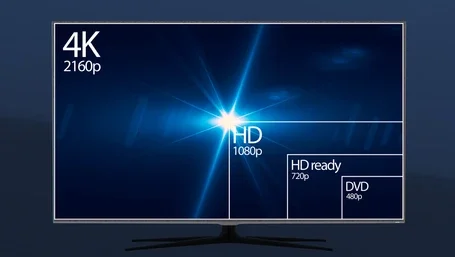Technology has greatly improved the way we capture, produce, and consume video content. With the advent of 4K Ultra High Definition (UHD) and Blu-Ray, we are presented with two popular options to enjoy high-quality visual entertainment. In this article, we will compare 4K and Blu-Ray to determine their differences, advantages, and overall viewing experience.
Resolution
One of the primary differences between 4K and Blu-Ray is the resolution. 4K UHD offers a resolution of 3840 x 2160 pixels, which is four times the resolution of 1080p Full HD. On the other hand, Blu-Ray provides a resolution of 1920 x 1080 pixels, which is still considered high definition but falls short of the clarity offered by 4K.
Video Quality
When it comes to video quality, 4K surpasses Blu-Ray in terms of sharpness, detail, and overall clarity. The higher pixel density of 4K results in more lifelike images with vibrant colors and enhanced contrast. Blu-Ray delivers excellent video quality, but it cannot match the level of realism and visual impact provided by 4K UHD.
Audio Quality
Both 4K UHD and Blu-Ray support high-quality audio formats such as Dolby Atmos and DTS:X, ensuring immersive sound experiences for viewers. However, 4K has the advantage of offering higher bitrate audio, which can result in more detailed and dynamic sound compared to standard Blu-Ray audio.
Storage Capacity
Blu-ray discs typically have a storage capacity of 25GB for single-layer and 50GB for dual-layer discs. In contrast, 4K UHD discs boast larger storage capacities of 66GB for dual-layer discs and 100GB for triple-layer discs. This larger storage capacity allows 4K discs to accommodate the higher data demands of ultra-high-definition content, including the main feature, bonus material, and enhanced audio.
Playback Equipment
To enjoy 4K UHD content, viewers need a compatible 4K Blu-Ray player or a 4K Blu-Ray drive in their home theater setup. Additionally, a 4K UHD television or projector is required to fully appreciate the enhanced resolution and visual fidelity offered by 4K. Blu-Ray, on the other hand, is compatible with standard Blu-Ray players and HDTVs, making it more accessible to a wider audience.
Availability of Titles
While the library of Blu-Ray titles is extensive and includes a wide range of movies, TV shows, and documentaries, the availability of 4K UHD titles is steadily increasing as the demand for ultra-high-definition content grows. Many new releases are now offered in 4K, and there is also a trend of remastering older films in 4K, providing viewers with an expanding selection of UHD options to choose from.
Frequently Asked Questions Of Compare 4K and Blu-Ray
Can 4K Provide Better Picture Quality Than Blu-ray?
Yes, 4K UHD offers higher resolution, providing sharper and more detailed images compared to Blu-Ray.
Is Blu-ray Still Relevant With The Rise Of 4K?
Absolutely, Blu-Ray remains relev=ant as it provides high-quality video and audio, and is still widely supported.
What Are The Benefits Of Choosing 4K over Blu-ray?
Choosing 4K over Blu-Ray offers superior resolution, enhanced color depth, and HDR support for a more immersive viewing experience.
How Does The Price Of 4K Compare To Blu-ray?
The price of 4K discs and players has decreased significantly over the years and is now more comparable to Blu-Ray.
Conclusion
In conclusion, both 4K UHD and Blu-Ray offer impressive visual and audio experiences for home entertainment. 4K takes the lead in terms of resolution, video quality, and audio capabilities, providing a more immersive viewing experience for enthusiasts who demand the best possible picture and sound. However, Blu-Ray remains a popular choice for its compatibility with existing playback equipment and extensive library of titles. Ultimately, the choice between 4K and Blu-Ray depends on individual preferences, budget, and the availability of content

